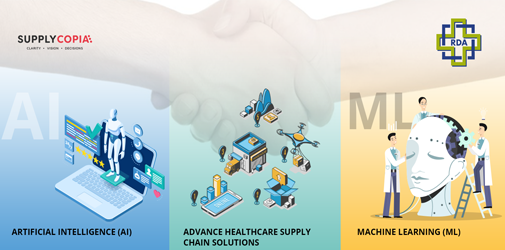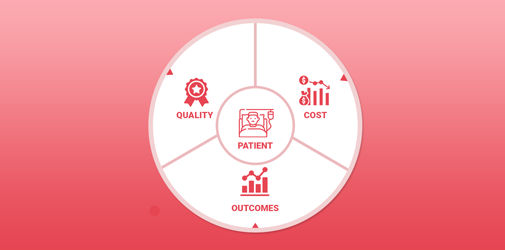ASHOK MUTTIN | JUNE 1, 2021
4 Surprise Discoveries from a CQO
Initiative: The Aha! Moments That
Make a Difference
by Ashok Muttin, CEO, SupplyCopia
As the old saying goes: You don’t know what you don’t know.
Unfortunately, this is the case in many health systems and hospitals when it comes to cost, quality and outcomes (CQO) variables.
Disparate systems and data on supply costs/usage, billing/reimbursement and patient outcomes prevent health leaders from understanding the true costs of care and what factors generate the greatest value (best outcomes at the lowest cost).
But when a healthcare organization is able to successfully integrate this data and generate actionable insights the possibilities are endless.
Once they open this Pandora’s Box of knowledge, they can prove or even disprove long-held convictions (e.g., the most expensive knee implant yields the best outcomes), identify gaps in processes (e.g., missed charge capture) and uncover opportunities for savings and efficiencies (e.g., consignment product management).
Throughout McLeod Health’s total joint CQO initiative with SupplyCopia, the team experienced many “Aha” moments related to their current processes and discovered ways to improve them through use of the dashboard and data.
Here are four significant discoveries:
1. Supply capture shortages: When SupplyCopia generated reports showing the supplies used in total joint procedures, it opened everyone’s eyes on the McLeod CQO team to inaccurate supply data capture at the point of use (POU). The surgeons were especially surprised at how often consumed supplies were not recorded, billed to the patient and reimbursed by the payer. The McLeod supply chain team is now working with the OR team to improve POU data capture.
“The physicians seemed to believe that supply chain has some magical tool that scans supplies and documents them. But in reality, the data is only as good as the person who is entering it. So I think that was one of the biggest ‘Aha’ moments for everyone, understanding the need for accurate and complete supply documentation at the patient bedside.”
- Carmen Winfield, vice president of Supply Chain, McLeod Health
2. DRG dilemmas: Using the SupplyCopia dashboard, the McLeod team was able to construct a list of standard components that were required for each diagnostic related group (DRG), compare supplies used by surgeon, and identify those who were either missing a key component, or using too many.
“We had one surgeon in particular where 50% of his procedures failed to have a certain component, which was necessary in order to complete that particular DRG. This work helped us to develop a normal construct, realizing that there may be variation for patient-specific reasons, but overall, there is a standard list of items that goes into a particular DRG case.”
- Dale Locklair, Senior Vice President Planning & Facilities Management, McLeod Health.
3. Revenue realizations: Working with SupplyCopia, the McLeod team discovered a problem with how its charge master interfaces with its item master, which results in revenue leakage. If a clinician attempts to record usage of a consignment item (aka “trunk stock”) and that product is not contained within the item master, the patient’s bill is automatically sent into a discrepancy queue. If the finance department does not address the discrepancy in a certain time period, the system automatically sends the bill to the payer. When the payer reviews the bill and realizes a supply critical to the DRG is missing, it kicks the bill back to McLeod for rework.
“It’s pointing us in a direction to fix a process problem internally that could then ultimately lead to higher charge values and possibly greater revenue coming back into the organization. We are now looking at how we can link SupplyCopia’s virtual item master to our item master and charge master so we have a one-for-one, real-time relationship for products across all systems.”
- BJ McCluskey, director of resource optimization at McLeod Health
4. Consignment Challenges: Capturing data on consignment products used in total joint procedures was extremely challenging for McLeod because these “bill-only” items are not contained within the item master. An OR nurse would manually enter the product data into essential systems (e.g., EHR, ERP) outside of the OR after case completion.
When examining the product usage data generated by SupplyCopia, the McLeod team realized this process, which relied on manual data entry by someone not necessarily in the room during a procedure, presented significant risk that not all supplies would be documented. As a result, they have “reconstructed” the process by bringing it into the OR where product documentation happens at the point of use (POU).
“What the project has brought to light is that maybe we need to change the supply documentation process, to have the patient charging take place when the nurse or the circulator in the room documents utilization of the goods. That way the information populates patient accounting and requisitioning systems, in turn generating a purchase order to the vendor and a bill to the payer.”
- Carmen Winfield, vice president of Supply Chain, McLeod Health
For the full story on McLeod’s total joint CQO initiative, grab 15 minutes and check out this video featuring interviews with the McLeod CQO team.
Ready to take on CQO at your organization? Or just need to figure out a good place to start? The team at SupplyCopia is ready to help. Reach out anytime — we’ll get right back to learn more about your current state of cost, quality and outcomes.
More from SupplyCopia



 ALL Solutions
ALL Solutions 
